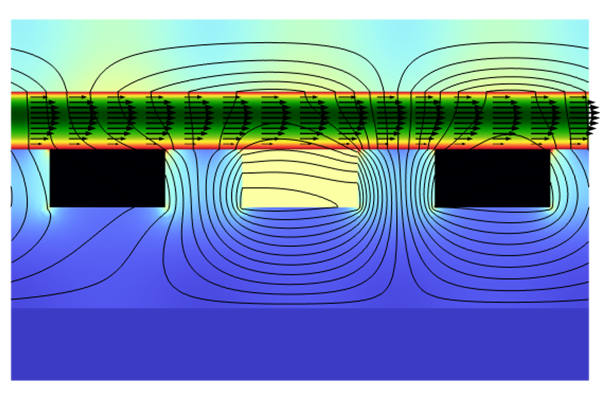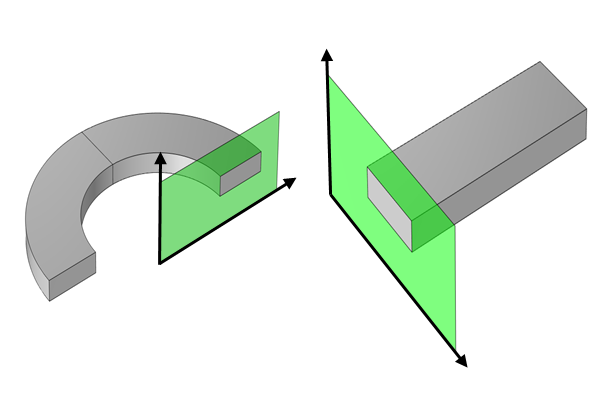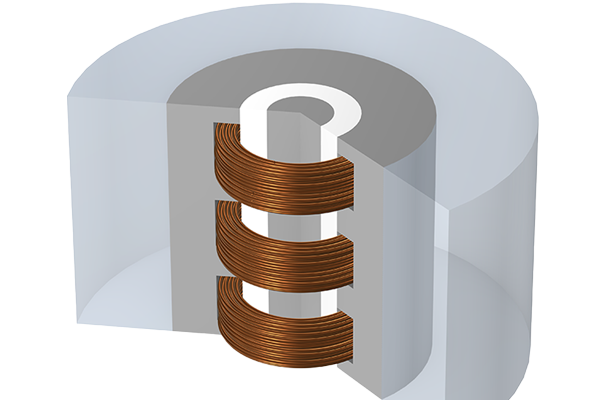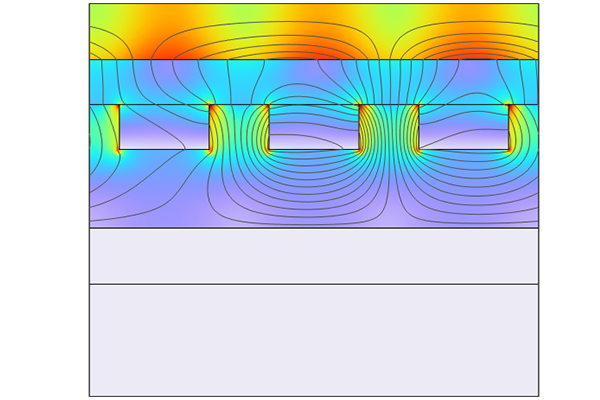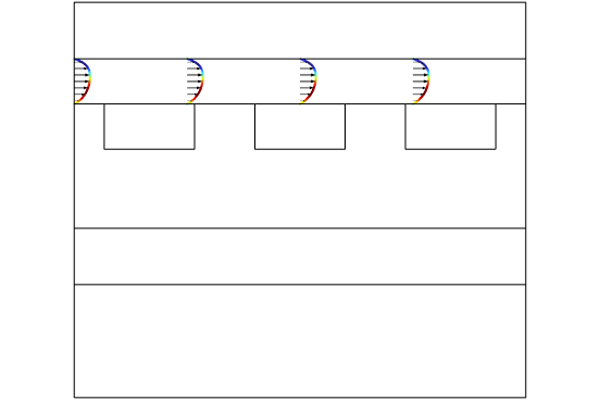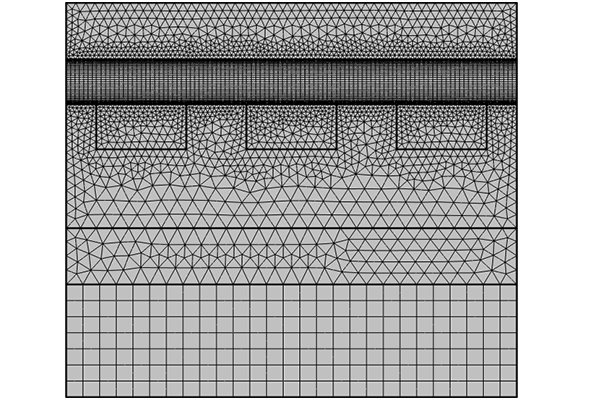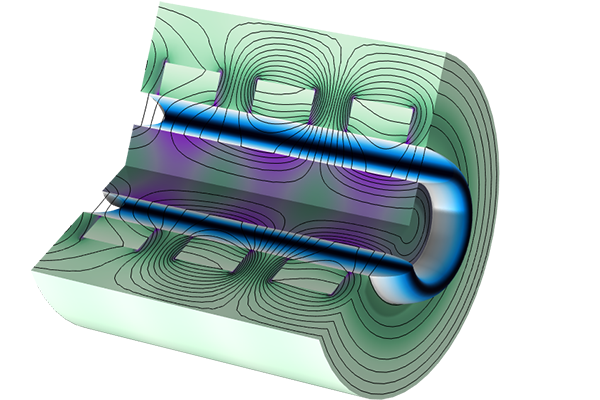Modeling Magnetohydrodynamic Flow
This self-paced course introduces the motivation and methodology for common magnetohydrodynamic modeling techniques via a series of hands-on examples highlighting the practical application. Using these, you will learn how to identify and select appropriate physics interfaces and apply appropriate domain and boundary conditions.
This course will focus on the specific challenges and techniques that arise when modeling magnetohydrodynamic flow, which requires some prior experience in electromagnetic field and fluid flow modeling. Prior to beginning this course we recommend reviewing Getting Started with COMSOL Multiphysics®, Basics of Modeling Laminar Flow in COMSOL Multiphysics®, and Introduction to the AC/DC Module as a starting point.
 A 3D MHD pump in the shape of a cylinder with a sector cut away, the internal coils visible.
Model of a magnetohydrodynamic pump for liquid lithium.
A 3D MHD pump in the shape of a cylinder with a sector cut away, the internal coils visible.
Model of a magnetohydrodynamic pump for liquid lithium.
An overview of the topics covered in each part of the course is outlined below:
Part 1: Introduction to Magnetohydrodynamic Flow Modeling
- What is magnetohydrodynamic flow?
- Applications of Magnetohydrodynamics
- Modeling magnetohydrodynamic flow in COMSOL Multiphysics®
Part 2: Choosing the Space Dimension and Physics Interfaces
- Using symmetry to reduce the modeling dimension
- Identifying suitable physics interfaces for the model
Part 3: Starting to Model Magnetohydrodynamics
- Adding the physics interfaces
- Choosing a study
- Identifying a suitable geometry
- Applying liquid metal materials
- Configuring the Magnetohydrodynamics coupling
- Introduction to the example models
Part 4: Setting Up The Electromagnetic Interface
- Configuring the Magnetic Fields interface
- Defining background fields
- Configuring the Magnetic and Electric Fields interface
- Defining background fields
- Defining wall conductivity
- Defining symmetries
Part 5: Setting Up Fluid Flow Interface
- The Inlet condition
- Swirl flow
Part 6: Meshing MHD Models For Efficient Simulation
- Designing meshes dependent on Hartmann numbers
- Evaluating the mesh
Part 7: Efficient Solving of MHD Models
- Load ramping to solve high Hartmann number problems
- Improving solver convergence and efficiency
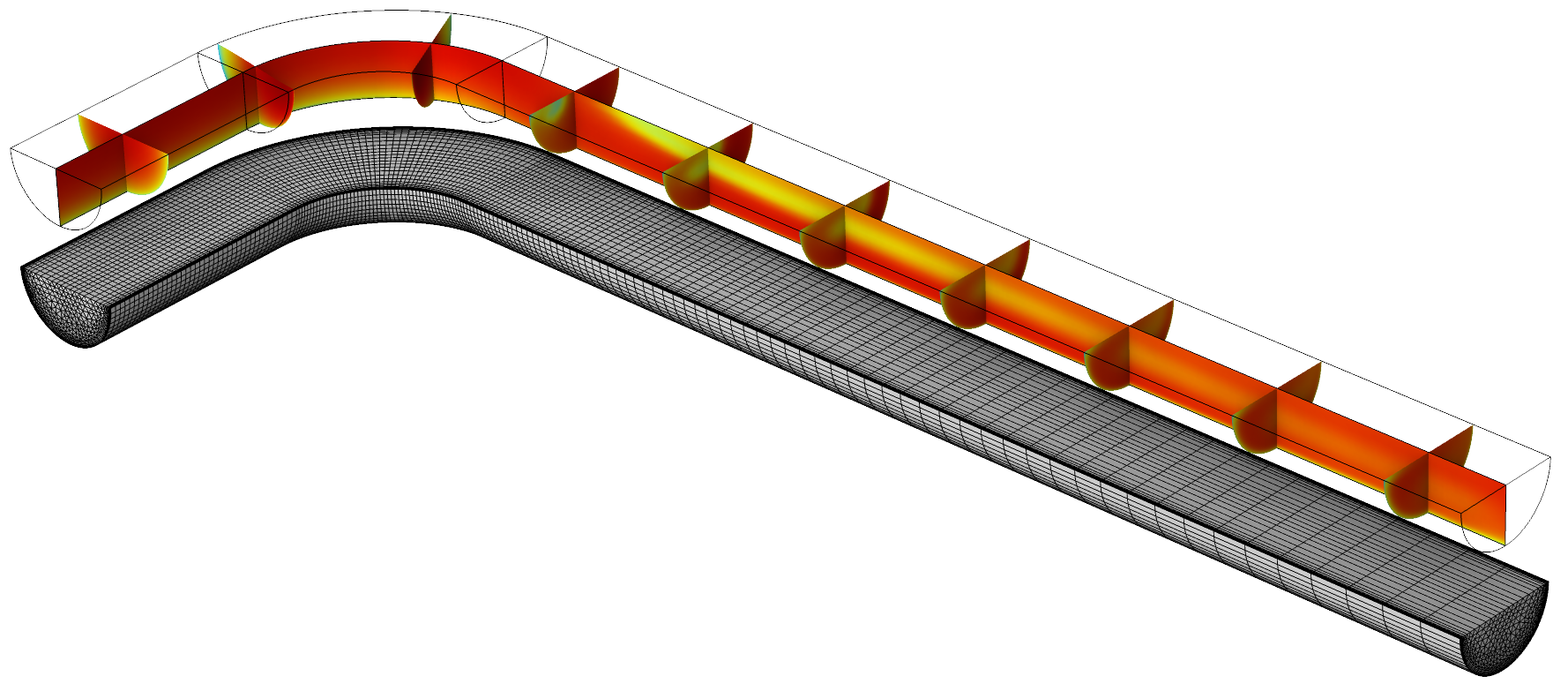
An example of a simple hydrodynamics model — the Flow Through a Pipe Elbow tutorial — showing a system where a swept mesh is beneficial. The cross section needs to be meshed with a finer mesh size, especially near the walls to resolve the gradient of the solution. The mesh discretization along the flow gradually increases in size as the gradient of the velocity in this direction becomes smaller. (Each cross section exhibits approximatively the same velocity profile.)
At the end of this course, you will be confident using the key techniques for modeling magnetohydrodynamic flow and will have experience in applying them to a number of common systems.
请提交与此页面相关的反馈,或点击此处联系技术支持。


